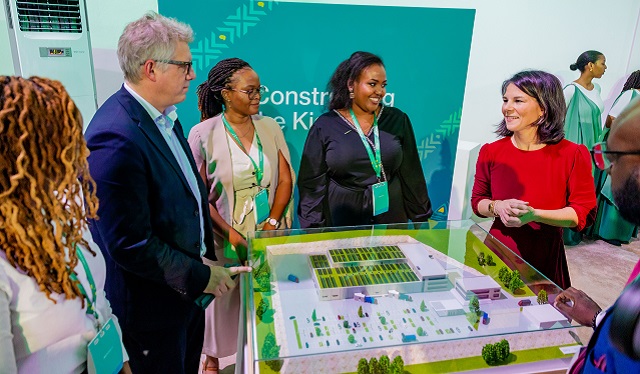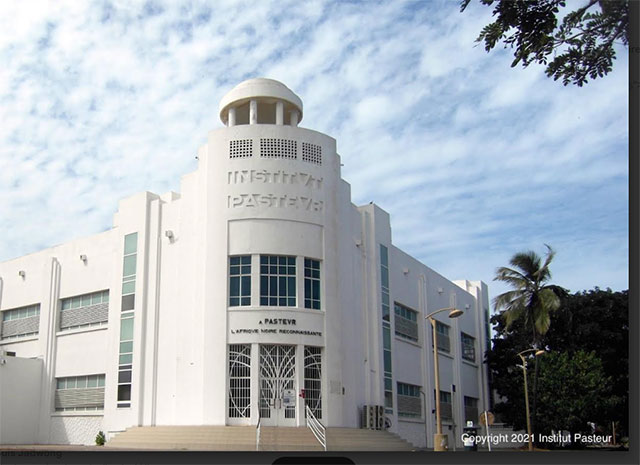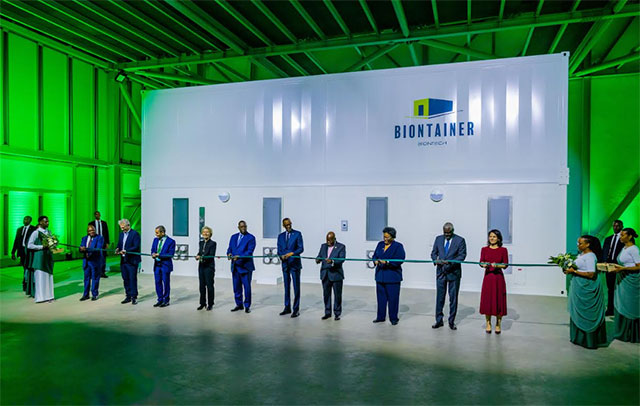
Why not all African countries should venture into vaccine business
ANALYSIS | The African Union has embarked on one of its most audacious health security missions: Ensuring that the continent manufactures 60% of its own vaccines by 2040. Africa currently manufactures a lowly 1% of the vaccines. However, since April 2021, when the AU tasked the Africa Centres for Disease Control and Prevention (Africa CDC) to initiate a structure, technocrats have been busy pushing the dream. In the third of our four-part series, The Independent’s Ronald Musoke looks at vaccine manufacturing projects under development across the continent and examines whether they make business sense.
In the aftermath of the COVID-19 pandemic, over a dozen African countries announced plans to build vaccine manufacturing plants in response to the frustration of struggling to procure vaccines and failing – even when they had money- to buy the vaccines. Several governments took up the challenge and sequentially announced plans to build vaccine production facilities after the African Union in April 2021 set an ambitious target to have 60% of vaccines produced in Africa by 2040.
Uganda’s President, Yoweri Museveni, and Kenya’s then Vice President, William Ruto, on July 6, 2021 launched Dei Biotech and Pharma on the northern fringes of Uganda’s capital, Kampala. The multi-billion dollar plant under construction is designed to manufacture one billion doses of mRNA vaccines and other innovative medicines.
Six months later, in January 2022, King Mohammed VI of Morocco launched the construction of a manufacturing plant for anti-COVID vaccines. Located in Casablanca, the SENSYO Pharmatech plant has been “dedicated to the manufacture and syringing of vaccines and has three industrial lines whose combined production capacity was scheduled to reach 116 million doses in 2024. The plant which was estimated to cost between €400-500 million was to be built in partnership with Swedish pharmaceutical company–Recipharm.
The frenzy around in-continent vaccine manufacturing went a notch higher when in February 2022, the World Health Organization (WHO) announced that six African countries including; Egypt, Kenya, Nigeria, Senegal, South Africa and Tunisia, would “receive tools needed to produce messenger RNA vaccines.” The selected countries were to receive training and know-how from the global mRNA technology transfer hub in Cape Town, South Africa, which was established in 2021 to ramp-up production of this particular type of vaccine in developing countries.
In 2022, VACSERA, the Egyptian Holding Company for Biological Products and Vaccines signed agreements with Sinovac, a Chinese biopharmaceutical company, to produce the VACSERA-Sinovac vaccine locally.
Egypt is one of the few African countries with vaccine production capabilities and has extensive expertise with diseases such as polio, Rift Valley Fever, and rabies. However, VACSERA has traditionally focused on late-stage production, mostly “fill and finish” vaccines and drugs for distribution.

In Dakar, Senegal, a groundbreaking US$ 45 million manufacturing initiative was launched in June 2023 thanks to a partnership between the Institut Pasteur de Dakar (IPD) and the US-based non-profit–the Mastercard Foundation. The two rolled out a partnership called MADIBA or “Manufacturing in Africa for Disease Immunization and Building Autonomy.”
However, it was the event of December 18, 2023, when German pharmaceutical giants, BioNTech, officially launched the operation of an mRNA vaccine manufacturing plant in the Rwandan capital, Kigali, which galvanised the continent’s prospects. The milestone was attended by a motley of world leaders including the host; President Paul Kagame, Ursula von der Leyen, the President of the European Commission, Moussa Faki Mahamat, the immediate former Chairperson of the African Union Commission, the immediate former presidents of Senegal and Ghana as well as Mia Amor Mottley, the Prime Minister of Barbados and Annalena Baerbock, Germany’s Foreign Affairs Minister.
“This is an important day for Africa. The continent is committed to increasing the accessibility and quality of needed vaccines and other medicines to be available to all Africans. That is also the purpose of the African Medicines Agency (AMA), which has its headquarters here in Kigali,” said Moussa Faki Mahamat.
“In this sense, we believe this BioNTech facility and AMA will contribute to our collective vision of a self-reliant Africa. Creating a high-quality regulatory environment and ensuring vaccine independence is key to our future capacity to prepare, respond and better recover from pandemics. Working together to promote vaccine equity for Africa remains our priority,” he said.
President Paul Kagame said that vaccine inequity hit Africa hard during the pandemic. But BioNTech’s partnership with Africa demonstrates that vaccine technology can be democratised, so that Africa is ready and resilient no matter what happens in the future.
Annalena Baerbock, Germany’s Foreign Affairs Minister, said the road to a fair international health architecture is not a short-distance race, but a team marathon. “That is why Team Europe supports the goal of Africa’s own vaccine production – from conception to injection,” she said.
Reiterating Africa’s dire vaccine landscape, Baerbock said Africa produces only one in 100 of the vaccine doses administered in Africa. “That should change in the next 15 years,” she said.

For Ursula von der Leyen, the President of the European Commission, the opening of the first BioNTech Africa facility in Kigali marked an important step towards African vaccine sovereignty. She said local manufacturing of vaccines with mRNA technology, in Africa, for the African people, would be a game changer in the fight against diseases and pandemics.
It’s a very tough market
Having less than 1% of Africa’s vaccines manufactured on the continent creates a significant health security risk on the continent, experts say. But in what has been described as a reality check for the clamour for in-continent vaccine manufacturing, American pharmaceutical giants, Moderna, said in April 2024 that it would pause its efforts to build an mRNA facility in Kenya. It said it needed to determine future demand of mRNA vaccines on the continent.
This was a rapid reversal to a year earlier when Moderna, with assistance from the U.S government, had signed a memorandum of understanding with Kenya to build a brand new mRNA vaccine production plant worth US$500 million. The facility was supposed to be the first plant in Africa, with close to 500 million doses of mRNA vaccines produced annually.
Moderna said the demand in Africa for COVID-19 vaccines had declined since the pandemic and is insufficient to support the viability of the plant planned in Kenya. “Moderna has not received any vaccine orders for Africa since 2022 and has faced the cancellation of previous orders, resulting in more than US$1 billion in losses and write-downs,” Moderna noted in a statement.
For experts like Nazeem Mohamed, an international pharmaceutical consultant with over 40 years of experience, the Moderna turn-about was not surprising considering that a decade before COVID-19, the number of vaccine manufacturing firms in the more established markets were actually declining.
Even before Moderna’s decision, Nazeem had told a conference held in Uganda in September 2023 that “the economics of vaccine manufacturing is not that simple.” “It’s all about volumes,” he said.
“The Serum Institute of India already produces billions of vaccines (about 75% of vaccines) for Africa. So, if you are going to make 80 million doses in Kenya or Rwanda, you cannot compete.”
In terms of global vaccine production, the WHO notes that two countries (China and India) account for 31% of global vaccine manufacturing, while globally, 10 manufacturers alone provide 70% of vaccine doses (excluding COVID-19 vaccines) and 85% of the global value of vaccines.
When looking at individual vaccines, often only two or three suppliers provide more than 80% of supply of vaccines, with more than half of suppliers globally producing only a few and only serving local markets. There is therefore an uneven market concentration in vaccine manufacturing at the global level.
“That is why to be honest, it’s going to be a rare occurrence of an African vaccine company to break even.” Nazeem noted that barring Egyptian vaccine manufacturers, not a single vaccine manufacturer on the continent is profitable. “It’s a very tough market,” he said.
Today, however, despite Nazeem’s pessimism, demand for essential vaccines continues to grow worldwide. The World Health Organisation (WHO) estimates that without COVID-19 vaccines, the 2021 global vaccine market supplied about 5.3 billion doses, with a value of US$ 42 billion and 4% of the pharmaceutical market. While the global vaccine market was at US$61.04 billion in 2021, it is projected to grow to US$67.2 billion by 2026.
Yet, even amidst this market potential, access to essential vaccines remains inequitable, with the United Nations estimating that globally, in 2020, over 22 million children missed essential vaccines. Across Africa, as of 2022, millions of people were not or were under-immunised, and each year, 9.4 million children miss their recommended third and final dose of the dipththeria, tetanus, and pertussis (DTP) vaccines.

While Africa has around 16% of the world’s population and bears about 25% of the global disease burden and over 50% of the world’s infectious disease burden (HIV, Ebola, Lassa Fever, dipththeria, tetanus and pertussis), less than 1% of the vaccines required by Africans are produced in Africa. So, could the many new projects on the continental horizon offer some respite? That is the question.
Not as straight forward
Not exactly, say experts The Independent has talked to. This is partly because most of the recent vaccine manufacturing projects that were greenlit targeted mainly COVID. And it shouldn’t be that way.
“We need to avoid duplication,” Prof. Pontiano Kaleebu of the Uganda Virus Research Institute (UVRI) told The Independent. “We got excited with messenger RNA but there’s only one vaccine that has been licenced as messenger RNA– the COVID vaccine. And there are many manufacturing plants that are coming up talking about messenger RNA.”
Prof. Kaleebu says if you invest in messenger RNA only, the continent could end up not having vaccines that are working or are licensable. He says the proprietors of vaccine manufacturing should not forget other platforms such as vector vaccines.
“When we have a lot of fill and finish manufacturing plants and we don’t invest in early antigen production, or design tech transfer to allow us to make our own antigen, that’s a risk,” he says, noting that: “The market can limit you if you have a lot of products and you have no market.”
Prof. Kaleebu says the continent needs to look at the whole pipeline, including from very early stages of research onto antigen design, tech transfer to be able to manufacture products that are off IP (intellectual property protection).
A Wellcome-Biovac study done in 2023 on scaling up Africa vaccine manufacturing capacity notes that the business case for vaccine manufacturing in Africa is certainly not as straight forward as African companies will struggle to be competitive.
The study notes that on top of large investment costs, the manufacturers will also incur higher costs of goods sold and higher operating costs (labour, repairs, utilities) than established Developing Countries Vaccine Manufacturers (DCVMs).
The report says as the manufacturers scale-up, continuous innovations in the vaccine-manufacturing space should improve economics, but that will happen in the long term, at best.
In order to improve economic viability, a few success factors should be considered, the report says. First, large scale facilities (about 50 million vials capacity per year) need to be prioritised, as smaller scale fill and finish facilities are unviable without substantial subsidies.
Manufacturers will also need to export their products beyond their borders, as national and regional markets are underutilised. Thirdly, locally manufactured vaccines will have to compete with the low-price vaccines from other manufacturers in countries like India and China, so a mechanism will be needed to subsidise a portion of the extra costs.
The Wellcome report warns that increasing Africa’s vaccine manufacturing capacity will be a multi-year, complex undertaking that will require stakeholders across the public, private, and social sectors to work together to create a robust enabling environment. The Wellcome-Biovac report also spoke of “Advanced Purchase agreements” by governments in support of manufacturers.
“Clarity is needed on the financial mechanism to counterbalance the lack of price-competitiveness (funding of the investments and/or operations, agreements to pay a price premium per dose, etc) and on the source of such funding (governments and/or donors),” it said.
According to the report, the historical dynamic, described by GAVI as the “high-price and low-volume trap” persists, and concrete measures are required to change it. Meanwhile, manufacturing initiatives remain uncoordinated, creating a risk of overcapacity. Current and announced Fill and Finish capacity is already more than 60% above 2040 PAVM targets, the report says.
Strategic risk
Dr John Nkengasong, the former Director-General of Africa CDC noted in July 2021 that “It comes down to basic supply and demand. If you produce vaccines, there must be somebody who buys the vaccines from you,” he said.
Dr. Nkengasong said that’s why African countries in the vaccine manufacturing space should work with partners such as GAVI, the Vaccine Alliance, and the Gates Foundation to shape the market. “There needs to be some guarantee that countries and organisations will buy volumes of vaccines from Africa,” he said.
He said Africa also needs to position itself in such a way that it does not just look inward and only produce vaccines for the African market, but is competitive and say: If we import from China and India, there is no reason why we cannot export to China and India. “We have to have that economy of scale,” Dr Nkengasong said.
Hub and spoke model
He said achieving that means incentivising research and development (R&D) and vaccine production in partnership with national governments, and GAVI and its partners. Dr. Nkengasong said, to deal with the issue of vaccine nationalism that might ensue, the African continent will have to adopt a “hub and spoke model” where everybody does not need to do everything from end to end.
“If we recognize that it takes so many components to produce a vaccine, then we could say country X focuses on glassware for vaccines, country Y focuses on lipids and so on,” he said. Using production process of an Airbus, he said the final aircraft is manufactured in Toulouse, France, but the parts come from all over the place.
Dr. Denis Kibira (PhD), the Coordinator of the Medicines Transparency Alliance (MeTA) agrees. He leads a multi-stakeholder initiative that brings together governments, civil society and the private sector on the continent to improve access to pharmaceutical markets and says regional discussions are important in harmonising plans to make manufacturing plants viable. “Plants have to be established in a strategic manner,” he told The Independent.
Itai Rusike, the Executive Director, Community Working Group on Health-Zimbabwe, also wants countries to look beyond national interest and collaborate as regional groupings, especially since every country might not have all the high technical skills needed.
Dr. Abebe Genetu Bayih, the Acting Lead, Platform for Harmonized African Health Products Manufacturing (PHAHM) at the Africa CDC, appears aware of all these challenges. He told The Independent that vaccine manufacturing on the continent is being guided by factual data.
He said the PAVM Framework for action lays the milestones of 10% of vaccines manufactured by 2025, 30% by 2030 and so on up to the AU ambition of 60% by 2040. He said eight antigens are expected for the continental market between 2025 and 2030. “We also have manufacturers who are producing vaccines for their local market. A good sign of progress towards our vaccine manufacturing base in Africa,” he said.
“While each country will remain sovereign in its industry-development choices, by setting and enforcing clear priorities in diseases, technologies, and value chain steps on which to focus across different countries, Africa CDC will steer a concerted effort towards healthy, sustainable, and coordinated vaccine manufacturing on the continent.”
****
This article is made possible by the African Union Media Fellowship programme, which is implemented by the African Union (AU) through the Information and Communication Directorate and supported by the European Union (EU). Its content is the sole responsibility of the journalist and does not necessarily reflect the views of the AU or the EU.
 The Independent Uganda: You get the Truth we Pay the Price
The Independent Uganda: You get the Truth we Pay the Price



